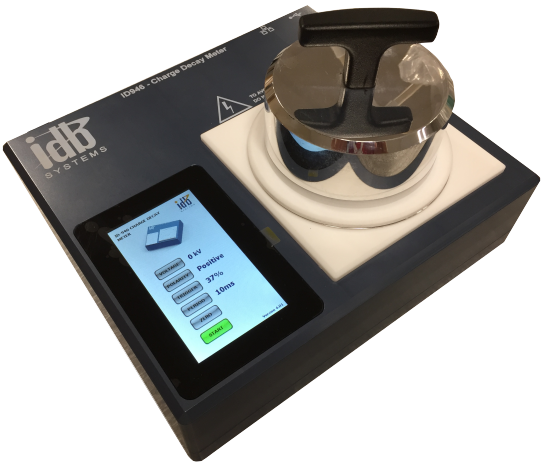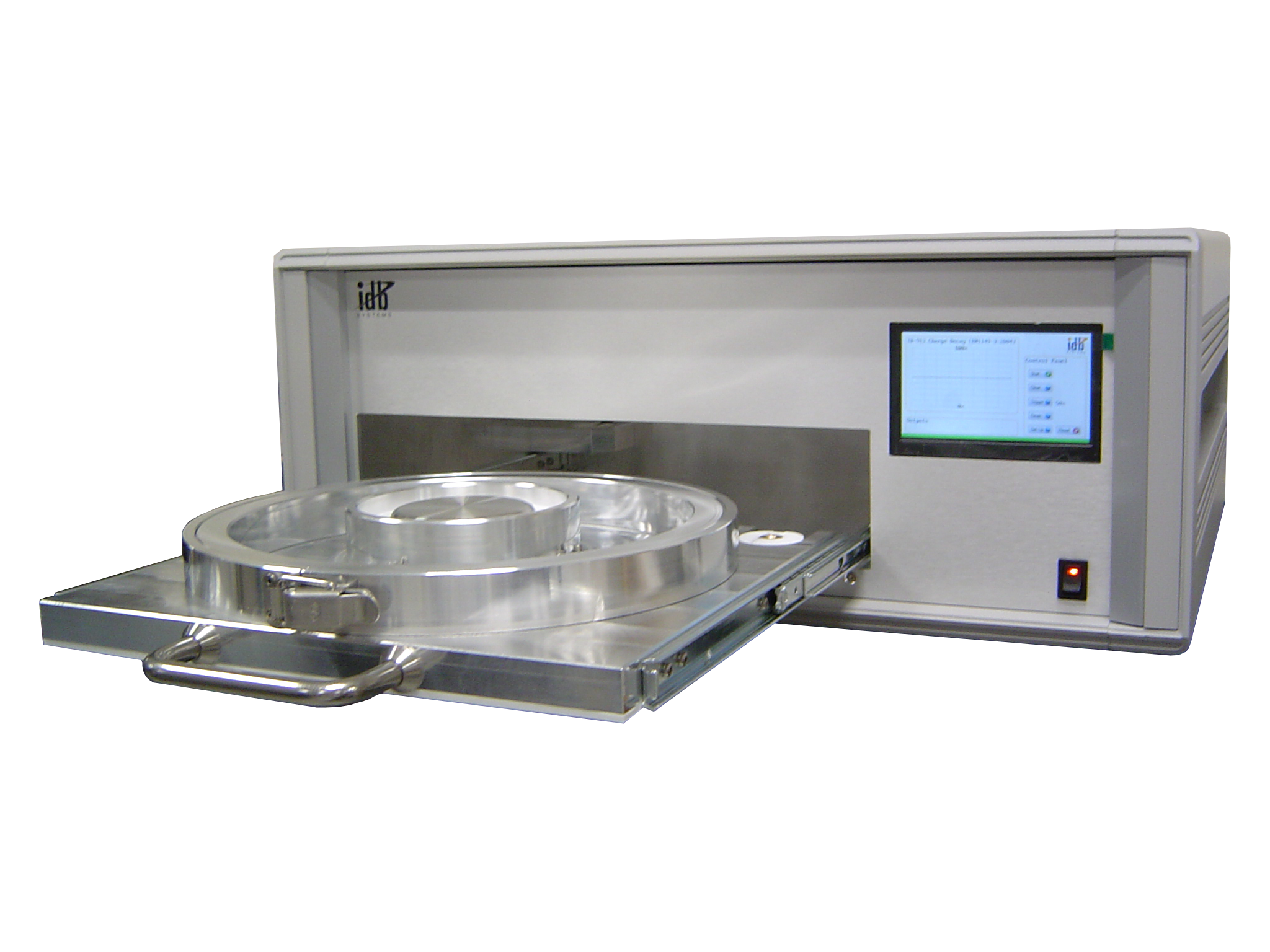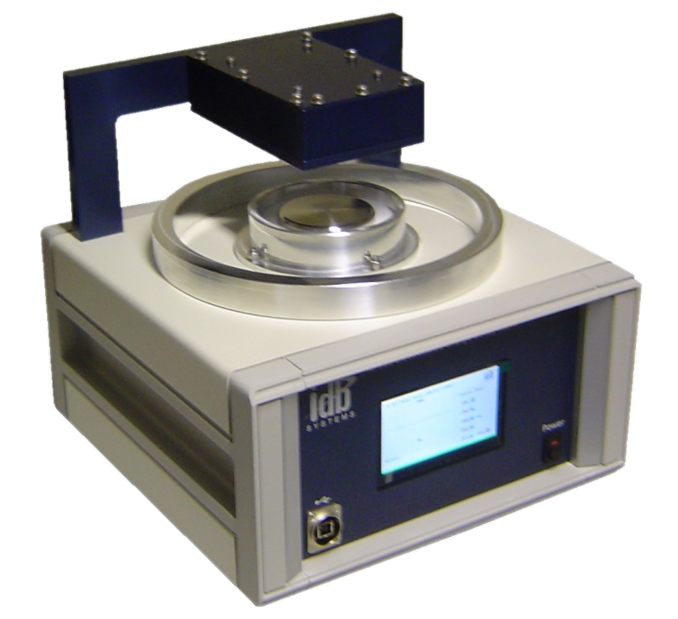
ID-917
The ID917 Charge Decay Meter is a general purpose electrostatic instrument designed for assessing the charge decay properties of films and plastics.
The test sample is simply loaded into a two-part sample holder which is then loaded into the instrument where the instrument can then operate in a stand-alone configuration or with a PC or laptop over the USB interface to test the film with either positive or negative test Voltages of either 1kV or 5kV – all user selectable.
The instrument will then plot the decay time on the TFT display - and the computer if connected – printing the decay time measured to one of either two pre-set measurement points of 50% discharge or 90% discharge. These discharge points can also be set by the customer to one of their choosing.
The graphical display prints the discharge curve in real-time sampling the magnitude of the electrostatic field at intervals from 10ms, 100ms, 1s to 10s which again is selectable by the user.
Test results can be stored on the computer for off-line analysis.



